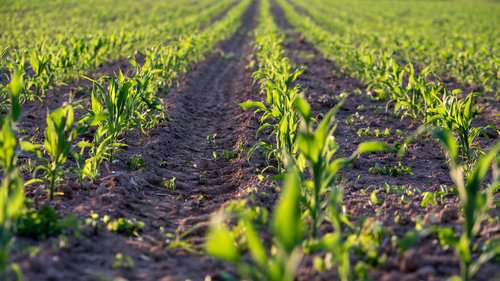With some favorable weather, farmers in Manitoba have started seeding
By Jennifer Jackson
In a slow start due to cool weather, Manitoba farmers have officially begun seeding.
With the new season comes the weekly provincial crop report – the Government of Manitoba released the season’s first report May 1.
The Province estimates that producers have planted less than 5 per cent of 2017’s crop, according to the report. This progress is slightly slower than usual for Manitoba, says Rejean Picard, farm production extension specialist with Manitoba Agriculture.
“Compared to the last two or three years, seeding (has been progressing) a little later than usual,” he says. That being said, “last week was colder than normal – this week, temperatures have warmed up and (seeding) conditions have (already) improved.”
In general, the Province reported fields are drying, as there was a lack of significant rainfall in last week. Forecasts predict warm weather to arrive soon, favourable for more seeding this week.
As weather was still cool last week, most hay fields and pastures are re-growing slowly.
Aside from the Eastern and Interlake regions, winter cereals overwintered well.
Overall, although the season may be slow, it is still progress, according to Picard.
“Everyone is off – not running – but at least they have started,” he says. “With this week’s (favourable) weather, we are seeing conditions improve daily – if this weather keeps up, we will see some (major progress) soon.”

The report provided field data information for the below five regions.
Central Region:
In Manitoba’s central region, some producers have started to seed their crops.
Fields are drying slowly due to cool temperatures in the past few weeks. The Province, however, reports higher temperatures and minimal rain in the forecast. Most producers will wait for these warmer conditions before seeding, according to the report.
Producers with suitable fields have begun seeding their cereals. Wheat, barley and oats range from 5 to 15 per cent seeded.
Some producers have seeded corn and peas but are holding off on soybeans until the threat of frost subsides.
“Most growers should be waiting until soil temperatures are warmer before planting – about 10 C average soil temperature is the minimum for optimum germination,” the report says.
The region is experiencing high winter annual weed pressure; some of the most noted weeds include chickweed, shepherd’s purse, volunteer canola and dandelion.
Pasture conditions in the Central region are fair in general due to slow growth and some excess moisture.
Southwest Region:
The Southwest region’s soil temperature (at 5 cm deep) varied last week from 3.4 C to 9.5 C.
Although the region did not receive meaningful precipitation last week, the high water table is saturating soil and thus delaying seeding for many farmers.
With warmer temperatures and windy weather predicted, seeding may pick up pace by the end of the week. Some farmers with suitable fields have started to plant cereals.
Most winter cereals overwintered well, with the exception of the drowned-out fields in the far southwest of the region.
The region has experienced slow weed growth due to the recent cool weather.
Northwest Region:
Cool temperatures last week have also slowed seeding operations in the Northwest region. Some fields remain wet, while snow remains in shaded areas.
In the southern areas, farmers have started to work in the field with harrowing, as well as pre-seed burnoff and fertilizer applications.
While some winter annuals grow, weed pressures are currently insignificant.
Because of the cooler weather, forage has yet to grow. Warmer temperatures this week could boost growth in pasture and hay fields.
Eastern Region:
Last week, the Eastern region experienced a wide range of precipitation – from 0.5 to 20 cm of rain/snow. Also last week, soil moisture conditions on crop, hay and pasture land rated adequate to surplus, the Province said.
Soil had an average temperature of 5 C to 9 C at seeding depth.
Between 35 to 80 per cent of the Eastern region’s winter wheat suffered damage overwinter. The Province is still assessing the extent of the damage but it suspects a poor crop this year.
Farmers began their seeding over the weekend; 1 per cent of spring wheat is planted throughout the region. With warm weather, the Province expects seeding to accelerate this week.
Interlake Region:
The Interlake region experienced a slow spring melt this year; temperatures are still dipping below freezing overnight. These weather conditions could increase the efficiency of fertilizer.
“Soil temperatures are in the low single digits and soil conditions are quite mellow with little lumpiness providing favourable conditions for high fertilizer use efficiency,” according to the report.
Due to this weather, seeding is less than 2 per cent complete.
Much like the Eastern region, the Interlake region’s winter cereals suffered winter damage. These crops are patchy as they try and recover. The Province suspects over 50 per cent of winter wheat fields will require re-seeding.
For the full report, visit the Manitoba Agriculture website.